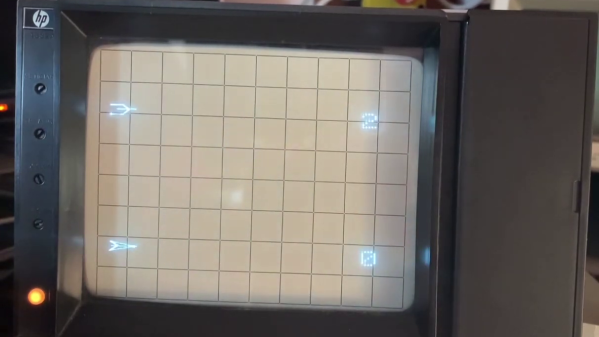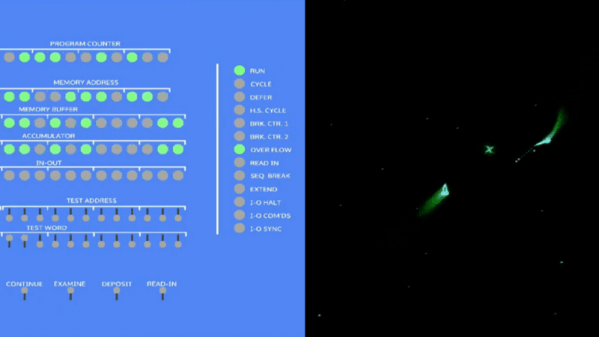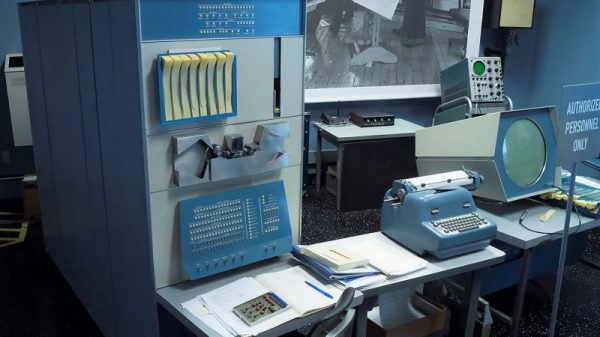The chiptune music scene is largely rooted in the sounds of the original Nintendo Game Boy and the Commodore 64, while still welcoming a wide range of other hardware under its general umbrella. Still, few chip musicians show up to a gig hauling a PDP-1. That’s perhaps a shame, given that the 1950s era machine can produce beautiful music—as demonstrated by [Peter Samson] and [Joe Lynch].
The video demonstration was recorded at the Computer History Museum in Mountain View, California. [Peter Samson] is operating the PDP-1, which is running the Harmony Compiler—which allows the machine to play four individual voices. This is achieved by taking advantage of the PDP-1’s program flags, which are visible as six light bulbs on the control panel. Instructions can be used to turn these bulbs on and off. The Harmony Compiler works by switching the bulbs on and off fast enough to create audible square waves when the light bulb outputs are wired to a simple audio amplifier.
Using Harmony Compiler, [Joe] and [Peter] worked together to transcribe the song Olson by Boards of Canada to play on the PDP-1. The song is encoded on paper tape, and fed into the machine—which dutifully plays back the hauntingly beautiful melody.
If you’re interested in the code that achieved this, it’s blessedly available via Github. If you love stories about old computers playing music, we’ve got those too. Video after the break.




 Using a combination of OCR and manual transcription to retrieve the code, [Mattis] took a deep dive into cleaning up the errors and solving a whole lot of system library and linking issues. Adding to the difficulty is that his PDP-11 is slightly different from the one used in 1974 when this port was written.
Using a combination of OCR and manual transcription to retrieve the code, [Mattis] took a deep dive into cleaning up the errors and solving a whole lot of system library and linking issues. Adding to the difficulty is that his PDP-11 is slightly different from the one used in 1974 when this port was written.









